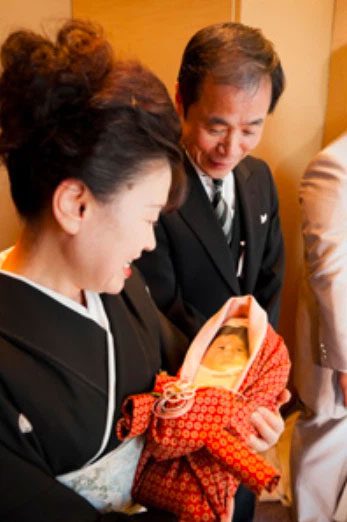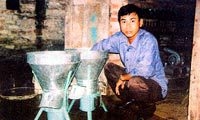Similar to customs around the world, when a baby is born in Japan, relatives and neighbors come to visit and congratulate the family. However, for the past two years, this cherished tradition has been hindered by pandemic prevention regulations and social distancing measures.

Image of a baby printed on a rice bag.
Yet, “from adversity comes ingenuity”; what is a concern for one person may be an opportunity for another. A rice shop owner in Kitakyushu (near Fukuoka) has devised a “clever” way to profit from tiny grains: stuffing rice into small bags featuring images of newborns.

Rice baby sent to relatives to cuddle as if they are holding a real baby.
These bags are affectionately called “rice babies” by the Japanese. They are rice bags printed with images of babies and weigh exactly the same as the child they “replace.” The “rice babies” are sent by the parents of the “real baby” to relatives, allowing them to “see” and “hold” the infant.

Mr. Naruo Ono, the owner of Kome no Zoto Yoshimiya rice shop, invented the “rice babies” 14 years ago when his son was born. At that time, some of his relatives were far away and unable to visit the baby as per tradition. This prompted Naruo Ono to think: Can I do something to address this issue?
He came up with the idea of making rice bags shaped and weighted like his son, attaching a photo to them and sending them to distant relatives so they could “see” and “hold” the child.

One day, someone spotted Naruo’s “rice baby” on the shelf and remarked on how interesting it was. At that moment, Naruo realized that his cute rice bags could be marketed. Since then, he began creating these baby-shaped rice bags for customers across Japan. Later, some merchants also replicated his invention.

Each rice bag is carefully weighed to match the baby’s weight.
The rice bags are meticulously weighed to match the weight of the baby. Some companies charge one yen per gram, and a 3.5kg package costs 3,500 yen or approximately $32 (equivalent to 730,000 VND).

In fact, Dakigokochi (“rice baby”) has been around in Japan since the early 2000s, but the Covid-19 pandemic has brought it back into the spotlight.




















































